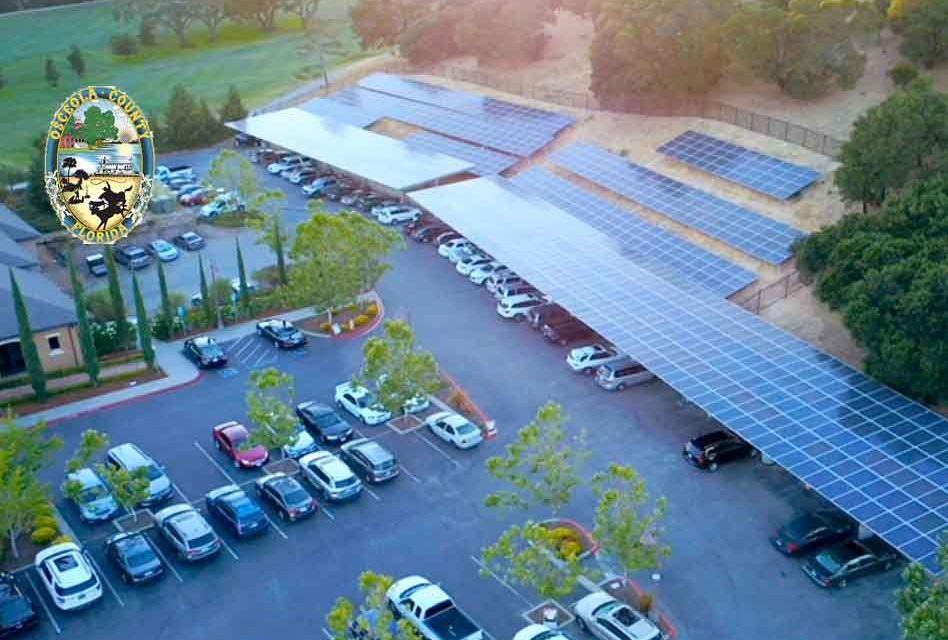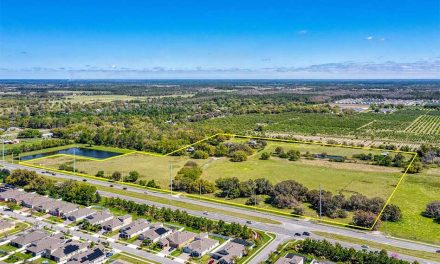Lean and green.
It’s a description of what Osceola County wants to look like. It might take until 2060, county officials said at Monday’s Board of County Commissioners meeting, but there’s a plan.
“Green” initiative plans, and a review of county green space requirements, were shared in separate presentations Monday.
Strategic Initiatives Manager Jeff Jones offered up ways that greenhouse gases – produced most by electricity consumption and transportation – can be cut around the county.
“Climate change is a global concern, but local governments play an important role in this to affect it over time,” he said.
Among the topics were:
Energy efficient buildings – by 2060, Jones said new buildings will produce enough renewable energy to meet their consumption requirements.
Waste reduction – By 2060, the county’s vision for the landfill will be this: who needs it? By expanding recycling and repurposing waste like food and landscape remains, the need to send solid waste to a landfill can possibly be eliminated.
Water conservation – With advances in landscaping, a 30 percent reduction in usage can be achieved.
Sustainable transportation and land use models – The goal here is to move work and other trips closer to home, shortening trips and reducing traffic and automobile dependence.
“It’s about adapting to environmental change that’s already occurred,” Jones said.
County commissioners also had their ideas to add to the list. Viviana Janer suggested increased composting and vegetable gardens in neighborhoods where they aren’t HOA-restricted, Brandon Arrington brought up keeping a high amount of permeable surfaces that can direct rainwater back into the ground and aquifer, and Peggy Choudhry, staying topical with the recent discussion, heated by many, of coal ash, wanted to make sure landfills follow all local, state and federal laws.
Commission Chair Cheryl Grieb said tackling green initiatives is a daunting yet one-step-at-a-time process.
“We’ll take bites of this elephant going forward,” she said.
Keeping open spaces aesthetics, recreation and gathering, ecological concerns or, just shade, help in that as well, and Community Development’s Susan Caswell followed that presentation with one about the county’s green space requirements.
County development requirements, in general, obligate developers to set aside 20 percent of land in a residential project and 15 percent of a non-residential ones to accessible open spaces. Those can include wetlands, ponds, buffer zones, school recreation areas, trails, civic spaces, recreational facilities and trees. They’re built into the development requirements.
Caswell showed an aerial picture of a local big-box store, with its large building and acres of parking. Then she noted the numerous sidewalks and buffers and the hundreds of trees on the site.
“This is how to maintain urban standards for centers,” she said.
An in-depth discussion of the GHG reduction initiative, which focused on five recommended goals, policies and related actions, will be included in Osceola County’s annual strategic planning exercise in early 2020:
1. Sustainable Land and Use Patterns.
Goal: By 2060, Mixed Use Developments (MXD) will make it possible to meet daily needs with fewer and shorter auto trips, reducing traffic emissions by 75%.
Policy/Actions: Support the creation of mixed-use developments (MXD) – essentially “live, work and play” neighborhoods – that will lead to daily routines with reduced vehicle miles, and thus, reduced vehicle emissions. Advocate for electric vehicles, mixed use principles, economic development aligned with MXD.
2. Energy Efficiency.
Goal: By 2060, new buildings will produce enough renewable energy to meet their annual consumption requirements.
Policy/Actions: Decrease the use of electricity and promote energy conservation through energy efficient buildings and facilities (public and private sector). Obtain green building certifications; Retrofit County buildings; Amend LDC; Promote rainwater harvesting; Invest in Solar power and Green roofs; support PACE/Home renovation programs
3. Water Conservation
Goal: By 2060, per-capita potable water consumption is reduced by 30%.
Policy/Actions: Promote public and private programs that encourage water conversation, including the use of Florida-friendly landscaping and best-practice fertilizer ordinances, as well as the continued acquisition of sensitive lands and coordination with Water Management Districts.
4. Waste Reduction
o Goal: By 2060, the County eliminates sending solid waste to the landfill.
o Policy/Actions: Promote a strategy of reduce, reuse, and recycle that minimizes waste production and maximizes recycling; Promote construction & demolition recycling; Encourage reusable bags; Reduce landscape waste; Donate excess produce; Expand recycling to multifamily; Support composting program, as well as recycling/composting at public events.
5. Adapt to environmental change
Goal: Minimize vulnerability to the consequences of changes to the natural environment by increasing the County’s ability to deal with the impacts of environmental change.
Policy/Actions: Create a strongly engaged public/citizenry through education and advocacy; Increase urban tree cover; Implement Urban Forest Management Plan; Build strong partnerships with best-practice organizations; Manage fire hazard areas.




















